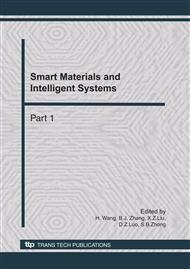[1]
Zhang, B., Chen, Y., Fan, W., Fox, E. A., Goncalves, M., Cristo, M. & Calado, P. (2005a). Intelligent GP fusion from multiple sources for text classification. InProceedings of the 14th ACM international conference on Information and knowledgemanagement (pp. pp.477-484.
DOI: 10.1145/1099554.1099688
Google Scholar
[2]
Zhang, XD. Text classification based on decision fusion model. In Proceedings of the 28th annual international ACM SIGIRconference on Research and development in information retrieval (pp. pp.266-273). : ACM Press, Salvador, Brazil.
Google Scholar
[3]
Zhang, G. P. (2007). Avoiding Pitfalls in Neural Network Research. Systems, Man and Cybernetics, Part C: Applications and Reviews, IEEE Transactions on, 37, pp.3-16.
DOI: 10.1109/tsmcc.2006.876059
Google Scholar
[4]
Zhang, L., Zhu, J. & Yao, T. (2004). An evaluation of st. atistical spam filtering techniques. ACM Transactions on Asian Language Information Processing (TALIP), 3, pp.243-269.
DOI: 10.1145/1039621.1039625
Google Scholar
[5]
Zheng, Z. & Webb, G.I. (2000). Lazy Learning of Bayesian Rules. Machine Learning, 41, pp.53-84.
Google Scholar
[6]
Xu L Y, Du Q D. Application of neural fusion to accident forecast in hydropower station. Proceedings of the Second International Conference on Information Fusion. Vol2 Sunnyvale, 1999, pp.1166-1171.
Google Scholar
[7]
Google adwords keyword tool. http: /adwords. google. com/select/KeywordToolExternal.
Google Scholar
[8]
The open directory project. http: /www. dmoz. org/. Yahoo! directory. http: /dir. yahoo. com.
Google Scholar
[9]
B. E. Boser, I. Guyon, and V. Vapnik. A trainingalgorithm for optimal margin classifiers. In COLT, pages 144-152, (1992).
Google Scholar
[10]
A. Z. Broder, M. Fontoura, V. Josifovski, andL. Riedel. A semantic approach to contextual advertising. In SIGIR, pages 559-566, (2007).
DOI: 10.1145/1277741.1277837
Google Scholar
[11]
P. Chatterjee, D. L. Hoffman, and T. P. Novak. Modeling the clickstream: Implications for web-basedadvertising efforts. Marketing Science, 22(4): 520-541, (2003).
DOI: 10.1287/mksc.22.4.520.24906
Google Scholar
[12]
E. J. Glover, K. Tsioutsiouliklis, S. Lawrence, D. M. Pennock, and G. W. Flake. Using web structure forclassifying and describing web pages. In WWW, pages562-569, (2002).
DOI: 10.1145/511446.511520
Google Scholar
[13]
S. A. Golder and B. A. Huberman. The structure of collaborative tagging systems. CoRR, abs/cs/0508082, (2005).
Google Scholar
[14]
K. Golub and A. Ard¨o. Importance of html structural elements and metadata in automated subjectclassification. In ECDL, pages 368-378, (2005).
Google Scholar


